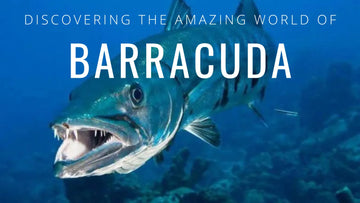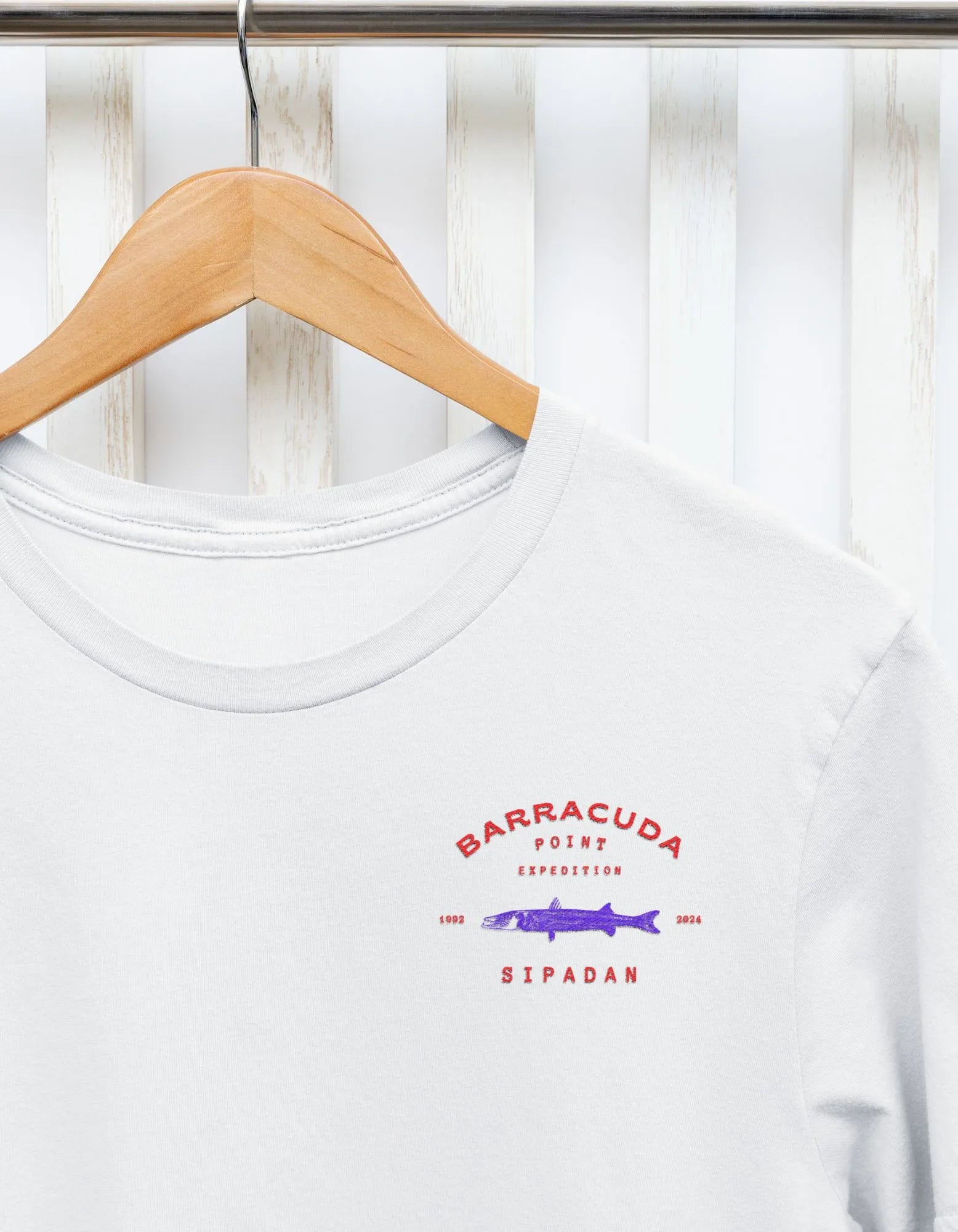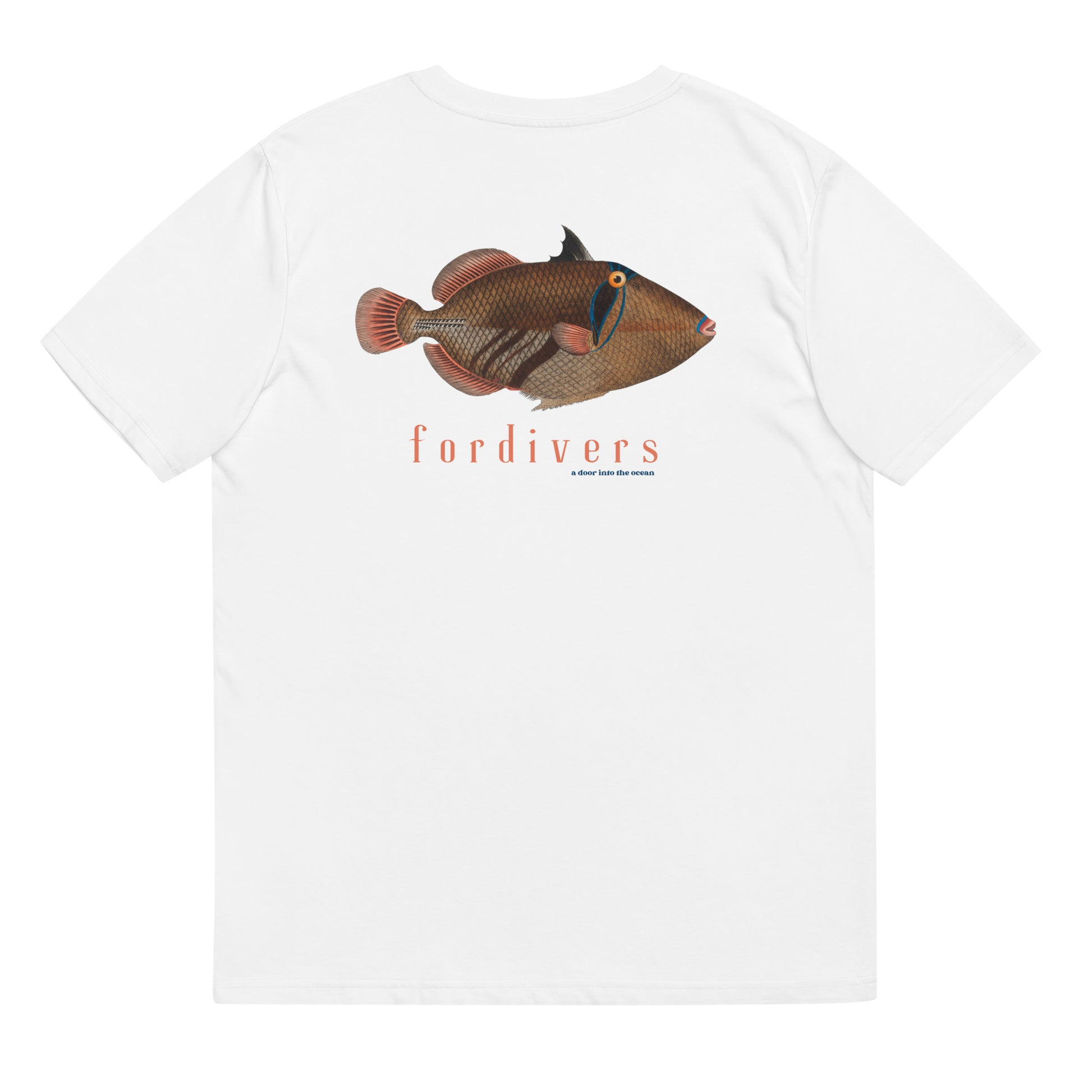The barracuda is a fish of the genus Sphyraena, known for its large size and fearsome appearance. The barracuda is a predator that lives in tropical and subtropical oceans and seas. These fish can be found both solitary and in large schools very close to the surface, although specimens have been found as deep as 100 meters. Juvenile barracudas congregate on shallow reefs, but adults are more likely to venture into the open ocean.
T-Shirts for Ocean Lovers
SEE MORE T-SHIRTS FOR OCEAN LOVERS
The Barracuda's fearsome appearance is due to its large pointed head and huge mouth full of sharp and numerous teeth of varying sizes arranged in two rows. Its body is robust and elongated, covered with smooth scales.

Barracudas can be found both solitary and in schools. Pic by dachalan
They are usually dark on the dorsal side, with shades ranging from green to grayish, silver flanks, and a white belly. However, coloration tends to vary from species to species. Some have irregular black spots or a series of dark cross bands. Barracudas can reach colossal sizes, up to 1.8 meters long and 30 cm wide.
The Tesla of fish
This voracious and opportunistic predator relies on the element of surprise and quick attacks as its main weapons to capture food. Its strength is extraordinary. Speeds of up to 30 mph have been recorded and it is believed to accelerate from 0 to 30 mph in 5.8 seconds. Because of its acceleration and speed, it does not have many natural predators.
Hoodies Designed for the Deck of Your Liveaboard
SEE MORE SWEATSHIRTS FOR DIVERS
Barracudas feed mainly on shrimp, prawns and various fish such as jacks, mackerel, mackerel or sardines. Although barracudas are solitary hunters, they often gather in large schools, both for reproduction and to have a better chance of catching food by grouping their prey. These voracious fish have strong and well-developed jaws that allow them to feed on fish larger than themselves, tearing their prey apart with violent movements.

Barracudas congregate in schools for both mating and hunting. Pic by petersbar
There are 27 different species of barracuda, some of which can be dangerous to humans, especially divers. Barracudas will sometimes follow divers, thinking they are predators and leaving debris for them to feed on. However, barracudas rarely attack humans. To reduce the risk of an unlikely barracuda attack if you are in an area where there are many, try not to wear shiny objects that they may confuse with their prey.
Although they do not usually attack divers, it is not advisable to get too close to barracudas
Little is known about barracuda reproduction, but it is certain that spawning occurs in the spring, when the male deposits up to 300,000 fertilized eggs in shallow coastal waters before returning to the solitude of the ocean.
Although it is a dish eaten in many parts of the world, both in soups and as fillets or slices, eating barracudas that live on coral reefs, such as yellowfin barracudas, can be dangerous because they feed on poisonous species such as pufferfish. This is not an endangered species as they reproduce easily and human consumption is not very popular.


























En las costas de colombia en santa marta sobre el sector donde se ubica el aeropuerto unas millas hacia adentró allí se han pescado varias barracudas con tamaños grandes 2.00 mts son verdaderamente grandes
Vi una barracuda, en el Tecolote, en la Paz, muy cerca de las rocas, nos seguía hacia donde nos movimos, nos causo miedo, y nos retiramos de la zona, en algún momento pensamos nos atacaría, si causa temor, y no sabíamos infomación acerca de este pez.
porqué se habla tanto de los tiburones, bastante de los calamares gigantes etc como grandes peligros del
mar y a la barracuda NO SE LA MENCIONADA PARA NADA en la filmografía sobre el tema? pareciera
como si no existieran…mi impresión es q son como pirañas gigantes! Gracias x responder
malvina.aparicio@gmail.com